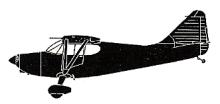
ASN Wikibase Occurrence # 178064
This information is added by users of ASN. Neither ASN nor the Flight Safety Foundation are responsible for the completeness or correctness of this information.
If you feel this information is incomplete or incorrect, you can submit corrected information.
| Date: | Saturday 25 July 2015 |
| Time: | 16:30 |
| Type: |  Stinson 108-3 Voyager |
| Owner/operator: | Private |
| Registration: | N6152M |
| MSN: | 108-4152 |
| Year of manufacture: | 1948 |
| Total airframe hrs: | 2868 hours |
| Engine model: | Franklin 6A4165B2 |
| Fatalities: | Fatalities: 0 / Occupants: 1 |
| Aircraft damage: | Substantial |
| Category: | Accident |
| Location: | North Las Vegas Airport (KVGT), Las Vegas, NV -
 United States of America United States of America
|
| Phase: | Take off |
| Nature: | Private |
| Departure airport: | North Las Vegas, NV (VGT) |
| White Hills, AZ (AZ50) | |
| Investigating agency: | NTSB |
| Confidence Rating: |
According to the private pilot, after an uneventful departure in high-density altitude conditions for the personal cross-country flight, he made a left crosswind turn in the airport traffic pattern as instructed by an air traffic controller. When the airplane was about 800 ft above ground level and near the departure end of the runway, the airplane stopped climbing, which was accompanied by a vibration. The airplane likely stopped climbing due to a partial loss of engine power and the high-density altitude conditions. The pilot lowered the airplane’s nose to increase airspeed and continued the turn to land on the runway, but when the airplane started to sink, he decided to land on a tarmac located straight ahead. The airplane touched down, with a tailwind, about halfway down the tarmac. The pilot deployed full flaps but was unable to slow the airplane before it impacted a fence and then nosed over.
A postaccident examination of the engine revealed that the No. 1 cylinder exhaust valve seal was degraded, which prevented the valve from seating properly and likely resulted in low cylinder compression and a partial loss of engine power. Further, testing of the magnetos revealed that the primary ignition lead for the No. 6 cylinder was inoperative, which likely resulted in the engine running roughly after the partial loss of power.
Probable Cause: The partial loss of engine power due to a degraded cylinder exhaust valve seal, which resulted in low cylinder compression.
Accident investigation:
 |
|
Sources:
NTSB
FAA register: http://registry.faa.gov/aircraftinquiry/NNum_Results.aspx?NNumbertxt=6152M
Location
Revision history:
| Date/time | Contributor | Updates |
|---|---|---|
| 26-Jul-2015 01:01 | Geno | Added |
| 26-Jul-2015 09:47 | Anon. | Updated [Date] |
| 27-Jul-2015 19:10 | Geno | Updated [Registration, Cn, Operator, Source, Damage, Narrative] |
| 04-Aug-2015 19:59 | Fusko | Updated [Aircraft type] |
| 21-Dec-2016 19:30 | ASN Update Bot | Updated [Time, Damage, Category, Investigating agency] |
| 01-Dec-2017 15:04 | ASN Update Bot | Updated [Operator, Other fatalities, Nature, Departure airport, Destination airport, Source, Narrative] |
Corrections or additions? ... Edit this accident description
The Aviation Safety Network is an exclusive service provided by:


 ©2024 Flight Safety Foundation
©2024 Flight Safety Foundation